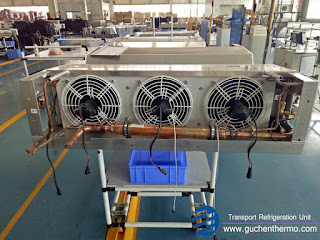India is a surplus producer of many agricultural products. However, due to the lack of investment in cold storage, warehouses, processing equipment and exports, farmers in this country cannot get sustained high returns. For a country where most of the population depends on agriculture for their livelihoods, it is necessary to invest heavily in cold storage facilities. Due to the growth of retail, fast food, food processing and e-commerce industries, the Indian cold storage market is expected to grow at a rate of 16.09%. The cold storage market in India is worth at least US$8.57 billion. The recent amendments to India’s Basic Commodities Act removed restrictions on agricultural storage and improved the prospects of this key sector.
Cold storage is a key requirement for storage and distribution of perishable commodities and food after harvest. It facilitates the transportation of perishable agricultural products such as fruits, vegetables, meat, fish, poultry, milk and dairy products from production centers to consumption centers. The storage time of the product at room temperature is short, ranging from a few days to several weeks, while the storage time at the freezing temperature ranges from a few weeks to several months. Frozen food is very popular and is considered to be the closest to fresh produce, and is more popular than other types of preservation techniques. Perishable agricultural products are stored in cold storage shortly after harvest, regardless of whether they have been pre-treated or processed.
For the cold chain, cold storage facilities are the core of the business. In addition to storage, the supply chain also includes refrigerated transportation, distribution, and retail display infrastructure, eventually reaching every household refrigerator. Most perishable agricultural products and foods go through an end-to-end cold chain link before reaching the end consumer.
In developed countries, more than 90% of perishable agricultural products and foods have gone through a wide range of integrated cold chains, minimizing losses in food quality or price. In developing countries like India, most perishable agricultural products and food face high losses and waste due to insufficient cold storage and cold storage chains. According to reports from India, the post-harvest losses of agricultural products are huge, causing at least 100,000 rupees in economic losses every year. So at present, the Indian government has made the cold chain a priority area of investment and announced a plan to provide financial assistance to private investors in the form of subsidies, 35% in the general area and 50% in the Northeast.
In India, about 75% of cold storage is a single-commodity warehouse, used to store potatoes and potato seeds. Storage of other vegetables and fruits still faces severe shortages. Since the storage infrastructure and technology are capital-intensive, the storage cost of 5000 tons capacity is as high as Rs 5 crore, so it is ideal to establish public storage facilities that can be leased to manufacturers, producer groups, traders, processors and exporters s Choice.
The increasing demand for frozen commodities has led to the expansion of the cold storage market and transport refrigeration system. The cold storage industry in agriculture is bringing various business opportunities to farmers and the entire economy. Therefore, if India is to become a self-reliant economy, it must rely on a strong cold storage industry, which will play an extremely important role.
Types of cold chain links:
1. Independent operation of cold storage;
2. The cold chain link from the farm to the cold storage;
3. The cold chain link from the cold storage to the final consumer;
4. As part of the integrated cold chain, it has a front-end plus back-end link;
The action decomposition of the cold chain:
1. Back-end integrated cold chain: pre-cooling, packaging, small cold storage facilities, from farm to cold storage
2. Front-end integrated cold chain: refrigerated trucks, large-scale cold storage facilities, ripening rooms, from cold storage to retail or consumer packaging
3. A fully integrated cold chain will include a combination of 1 and 2 above
Guchen Thermo Transport Refrigeration system
Main products:
◆ Refrigeration Units:
truck refrigeration unit
van refrigeration unit
◆ chiller units:
truck chiller unit
van chiller unit





没有评论:
发表评论